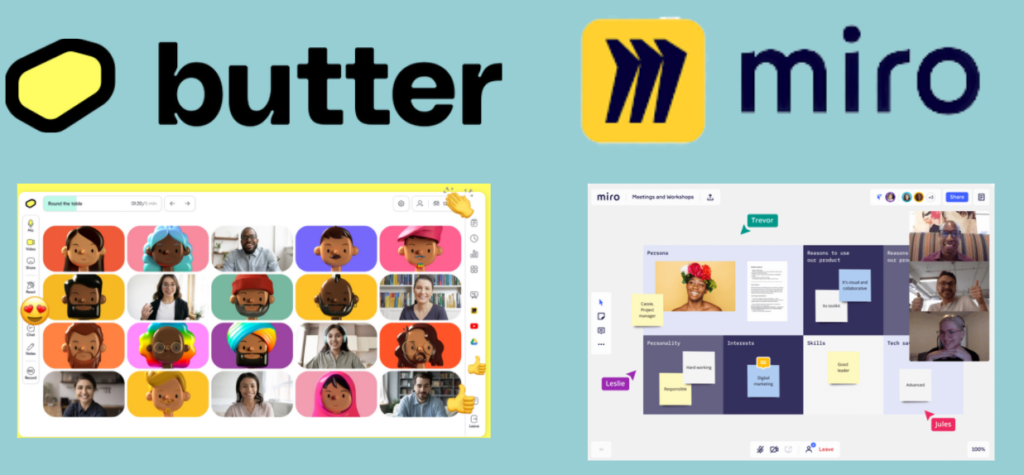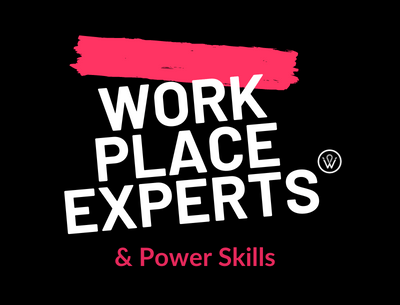
3 tips on how to boost your employees’ creativity within the workplace and remotely
Creativity fuels innovation at work, boosts productivity, and helps employees develop their skills. It’s important to encourage creativity at work whether your employees are in the office or working remotely. Allowing employees to share, discuss and generate new ideas and solutions not only help with innovative and creative thinking during problem-solving periods but it’s also known to have a positive effect on the overall work culture. This is why many organizations try to foster creative thinking by providing employees with the tools whether it be online tools or physical tools and encouragement they need to be inventive.
In a time when the majority of employees are working remotely, it can be a challenge for you as L&D (learning and development) leaders to encourage creativity. However, boosting creativity in employees is a great way to inspire them and get more out of them. As an L&D leader increasing your team’s creative potential is proven to increase your employees’ well-being and happiness at work.
Our 3 tips on boosting your employees’ creativity in the workplace and remotely:
- Set the stage for brainstorming
- Encourage collaborations
- Allow for flexible work hours

Check out our Creativity L&D Expert Jonathan’s workshops to get more tips on how to improve your team’s creativity. Jonathan helps business leaders and teams exploit their creativity and collective intelligence to strengthen their business models, marketing and innovation programs, and organizational development.
Check out his website for more tools.
Set the stage for brainstorming:
Ideas emerge from conversations, discussions, problems, and challenges that people encounter while working together. The best place to start is by setting the stage for brainstorming. Brainstorming allows everyone involved to bring their unique experiences and perspectives to the table whether it be a physical table or a virtual meeting.
Within the workplace, there are many ways to set the stage for brainstorming such as having meetings where ideas can flow. One great strategy to use for your workplace can be:
The Round-robin brainstorming:
In a round-robin brainstorming, before the meeting begins, each member prepares one idea. The rules of the brainstorming exercise is that everyone shares one idea before the second person can then contribute. if someone has run out of ideas you can come back to the person at the end so they have more time to think. It’s also a good idea for the team to have some time to prepare ideas before the brainstorming session.
Other ways to set the stage are by allowing employees to create their own whiteboards or encouraging open discussions and sharing different points of view, etc. These activities will not only allow employees to think outside the box but also enable them to gain valuable insights into each other’s perspectives. This could then spark new collaborative ideas that lead to creative innovations.
If your employees are working remotely you can set the stage for a virtual meeting. This could be by using Butter or Miro who we proudly partner with.
Butter
Butter is built specifically for hosting interactive sessions as smoothly as possible, without the need to manage multiple tools. You can prepare, run and debrief virtual sessions that participants love – all from one place! They focus on empowering facilitators and hosts by giving them all the tools they need in one place – and ultimately, run sessions that participants love. It comes with next-level breakouts, a session planner for your agenda, built-in polls, native integrations with Miro, Mural & YouTube, fun reactions, sounds, and more.
Miro
Miro is the online collaborative whiteboard platform that brings teams together, anytime, anywhere. It is built as a go-to tool for creating meetings, workshops, brainstorming, strategy and planning, and much more. Miro also empowers remote, in-office, and hybrid teams to communicate and collaborate across formats, tools, channels, and timezones — without the constraints of physical location, meeting space, and whiteboards.

Encourage Collaboration:
Collaboration can be seen as an act of sharing knowledge, information, experience, expertise, wisdom, learning, opinions, and values between individuals. Collaborating provides opportunities for employees to learn from each other. Research shows that groups of four people produce about twice as many creative ideas as individual members of the same group.
When people work together, they tend to generate more innovative solutions than if they worked alone. For example, research shows that groups of four people produce about twice as many creative ideas as individual members of the same group. Employees can share their ideas, thoughts, suggestions, and feedback through various means.
For employees working in a workplace, this could be through face-to-face interactions. For employees working remotely they can collaborate through the use of emails or phone calls. Also could include text messages, group chat, virtual work meetings, and more.
Allow for flexible work hours to boost creativity:
Flexible work hours help employees balance work and personal life. Flexibility allows employees to take care of family responsibilities. Also attend school events, volunteer, exercise, spend time with friends and loved ones, and pursue hobbies. Having flexible work hours allow employees to take longer for lunch. Allowing them to be able to go to the gym, read a book, meditate, etc. This then allows them to look after their well-being. This leads them to be able to be more creative when producing work.
Employees working 9 am-5 pm is no longer the norm. Whether your employees are in the office working or working remotely allowing them to have a work-life balance is important. A tip for adopting flexible work hours could be at your next meeting to set aside time to talk to your employees about self-care practices. Also, start an ongoing discussion for employees to share ideas and check in with each other. Promoting workplace well-being allows you to become more understanding toward your employees and become more adaptable.
In conclusion, creativity has been proven to increase productivity and improve employee satisfaction. By implementing the 3 tips within your workplace and workspace at home will allow your employees to boost their creativity and overall performance.
You also might like…
This is content that caught our eye that you might like.
The headline from Sally Coft “Creativity at work: Why it’s more important than ever and how to boost it”
Wework ideas’ blog post “How to foster creativity in the workplace”
Also the headline by Wework “10 effective brainstorming techniques for teams”
Jonathan’s website has great tools and tips for creativity.
Together Platform’s blog post “Creative Ideas To Improve Your Remote Employees Well Being”




